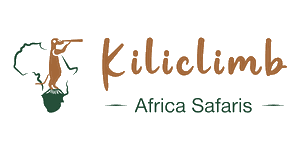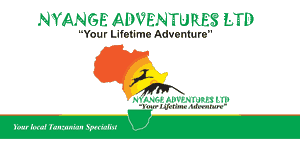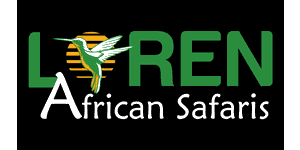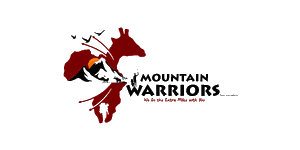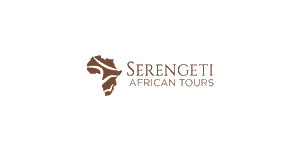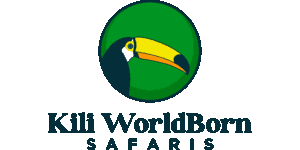Tour Length
Rates in USD $ – Change Currency
Per person, excl. international flightsOperator Rating
Other Tour Features
Filter by Operator
Filter by Accommodation
Mt Kilimanjaro Climbing, Trekking and Hiking Tours
For many visitors to Africa, climbing Mt Kilimanjaro is a once-in-a-lifetime challenge. The climb takes in muddy rainforests, unique high-altitude plants and alpine meadows before finally arriving at the glacier-coated summit. Standing tall above the savannahs of East Africa, Mt Kilimanjaro (5,895m/19,340ft) is an icon of Africa. But just how do you go about climbing Tanzania’s Mt Kilimanjaro and how fit do you have to be? We answer some of these common questions below.
-
Top Rated Operator

8-Day Mount Kilimanjaro Trekking (Lemosho Route
$2,728 pp (USD)
Tanzania: Private tourBudgetCamping
You Visit: Arusha (Start), Mt Kilimanjaro, Arusha (End)

African Big Cats Safaris

5.0/5 – 483 Reviews
-
Best Seller
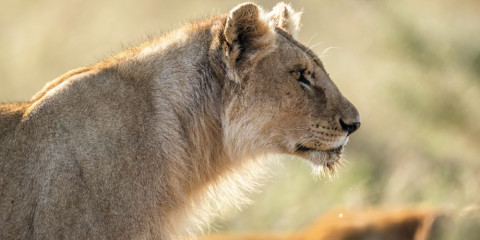
7-Day Wakanda Comfort Safari with Kilimanjaro Hike
$2,640 to $2,970 pp (USD)
Tanzania: Private tour
Mid-range Lodge & Tented CampYou Visit: Moshi (Start), Mt Kilimanjaro, Tarangire NP, Serengeti NP, Ngorongoro Crater, Arusha (End)

Serengeti Wakanda Tours and Safaris
5.0/5 – 620 Reviews
-
Top Rated Operator
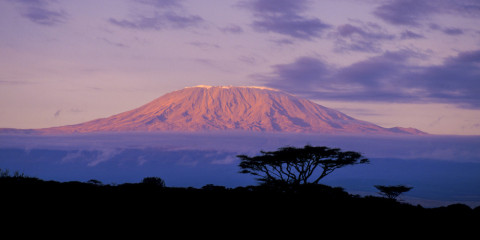
10-Day Mount Kilimanjaro Trek (Lemosho Route)
$5,750 to $6,050 pp (USD)
Tanzania: Private tourBudgetCamping & Lodge
You Visit: Arusha (Start), Mt Kilimanjaro, Arusha (End)

Wayfairer Travel

4.8/5 – 184 Reviews
-
Top Rated Operator
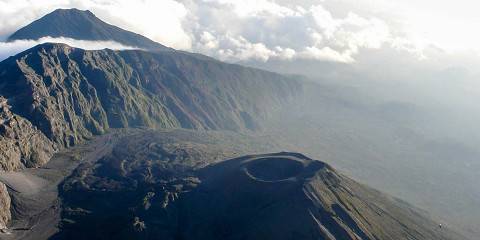
8-Day Kilimanjaro Trekking Lemosho Route
$2,200 pp (USD)
Tanzania: Shared tour (max 10 people per group)BudgetCamping
You Visit: Moshi (Start), Mt Kilimanjaro, Moshi (End)
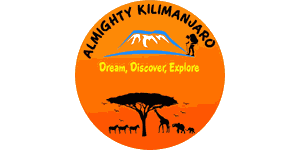
Almighty Kilimanjaro
5.0/5 – 221 Reviews
-

8-Day Kilimanjaro Expedition via Marangu Route
$2,422 to $2,638 pp (USD)
Tanzania: Private tourBudgetCamping & Hotel
You Visit: Moshi (Start), Mt Kilimanjaro, Kilimanjaro Airport, Moshi (End)

Altezza Travel
5.0/5 – 82 Reviews
-
![7-Day Machame Route Kilimanjaro Trek]()
7-Day Machame Route Kilimanjaro Trek
$1,832 pp (USD)
Tanzania: Shared tour (max 6 people per group)BudgetCamping
You Visit: Moshi (Start), Mt Kilimanjaro, Uhuru Peak (Mt Kilimanjaro), Moshi (End)

Spirit of Kilimanjaro and Safari
5.0/5 – 78 Reviews
-
![6-Day Climb Kilimanjaro |Machame Route Best Guide]()
6-Day Climb Kilimanjaro |Machame Route Best Guide
$1,485 pp (USD)
Tanzania: Shared tour (max 6 people per group)BudgetCamping
You Visit: Arusha (Start), Mt Kilimanjaro, Arusha (End)

kiliclimb Africa Safaris
5.0/5 – 93 Reviews
-
Best Seller
![6-Day Kilimanjaro Private Trekking Machame Route]()
6-Day Kilimanjaro Private Trekking Machame Route
$1,650 pp (USD)
Tanzania: Private tourBudgetCamping
You Visit: Arusha (Start), Mt Kilimanjaro, Arusha (End)

Africa Magic Holidays and Tours
5.0/5 – 59 Reviews
-
![8-Day Kilimanjaro Lemosho Route Trek]()
8-Day Kilimanjaro Lemosho Route Trek
$1,980 to $2,057 pp (USD)
Tanzania: Private tourBudgetCamping & Hotel
You Visit: Moshi (Start), Mt Kilimanjaro, Mweka Gate (Mt Kilimanjaro), Moshi (End)

Nafika Tours
5.0/5 – 11 Reviews
-
![6-Day Mt Kilimanjaro Climb Machame Route]()
6-Day Mt Kilimanjaro Climb Machame Route
$1,781 pp (USD)
Tanzania: Private tourBudgetCamping
You Visit: Arusha (Start), Mt Kilimanjaro, Arusha (End)

Karibu Tena Tours
4.9/5 – 14 Reviews
-
![7-Day Machame Route]()
7-Day Machame Route
$3,069 pp (USD)
Tanzania: Shared tour (max 10 people per group)BudgetCamping
You Visit: Moshi (Start), Mt Kilimanjaro, Uhuru Peak (Mt Kilimanjaro), Mweka Gate (Mt Kilimanjaro), Moshi (End)

Nyange Adventures
4.9/5 – 16 Reviews
-
![7-Day Rongai Climbing Route]()
7-Day Rongai Climbing Route
$1,595 pp (USD)
Tanzania: Shared tour (max 10 people per group)BudgetCamping
You Visit: Moshi (Start), Mt Kilimanjaro, Moshi (End)

Kili Vikings
4.9/5 – 36 Reviews
-
![5-Day Kili Trekking via Marangu Route]()
5-Day Kili Trekking via Marangu Route
$1,705 pp (USD)
Tanzania: Shared tour (max 10 people per group)BudgetMountain Hut
You Visit: Arusha (Start), Mt Kilimanjaro, Arusha (End)

Loren African Safaris
4.9/5 – 19 Reviews
-
![5-Day Mt Kilimanjaro Summit by Marangu Route]()
5-Day Mt Kilimanjaro Summit by Marangu Route
$1,749 pp (USD)
Tanzania: Private tourBudgetMountain Hut
You Visit: Moshi (Start), Mt Kilimanjaro, Moshi (End)

Kitonga Tours and Safaris
4.9/5 – 32 Reviews
-
Top Rated Operator
![6-Day Kilimanjaro via Machame Route Whiskey]()
6-Day Kilimanjaro via Machame Route Whiskey
$1,560 pp (USD)
Tanzania: Shared tour (max 12 people per group)BudgetCamping
You Visit: Arusha (Start), Mt Kilimanjaro, Arusha (End)

Mountain Warriors Tours and Safaris
4.9/5 – 245 Reviews
-
Top Rated Operator
![5-Day Striking Tanzania Safari with Kilimanjaro Hike]()
5-Day Striking Tanzania Safari with Kilimanjaro Hike
$1,000 pp (USD)
Tanzania: Shared tour (max 7 people per vehicle)BudgetCamping & Hotel
You Visit: Arusha (Start), Tarangire NP, Serengeti NP, Ngorongoro Crater, Mt Kilimanjaro, Arusha (End)

Go Serengeti African Tours
4.9/5 – 295 Reviews
-
![8-Day Kilimanjaro Hiking Lemosho Route]()
8-Day Kilimanjaro Hiking Lemosho Route
$2,662 to $2,695 pp (USD)
Tanzania: Private tourBudgetCamping
You Visit: Moshi (Start), Foothills of Mt Kilimanjaro, Mt Kilimanjaro, Uhuru Peak (Mt Kilimanjaro), Mweka Gate (Mt Kilimanjaro), Moshi (End)

Kili World Born Safaris
5.0/5 – 2 Reviews
-
![3-Day Hiking Adventure Kilimanjaro Tarangire &Ngorongoro]()
3-Day Hiking Adventure Kilimanjaro Tarangire &Ngorongoro
$682 pp (USD)
Tanzania: Shared tour (max 7 people per vehicle)BudgetLodge & Hotel
You Visit: Arusha (Start), Tarangire NP, Ngorongoro Crater, Mt Kilimanjaro, Arusha (End)

African Hub Serengeti
4.7/5 – 3 Reviews
-
![5-Day Mid-Range Safari to 3 Must See National Parks]()
5-Day Mid-Range Safari to 3 Must See National Parks
$2,145 pp (USD)
Tanzania: Private tour
Mid-range Lodge & Tented CampYou Visit: Arusha (Start), Mt Kilimanjaro, Serengeti NP, Ngorongoro Crater, Arusha (End)

Sercar Serengeti Wildlife Safaris
4.9/5 – 43 Reviews
-
![8-Day Climbing Mount Kilimanjaro via Lemosho Route]()
8-Day Climbing Mount Kilimanjaro via Lemosho Route
$2,406 pp (USD)
Tanzania: Shared tour (max 10 people per vehicle)BudgetCamping
You Visit: Arusha (Start), Mt Kilimanjaro, Arusha (End)

Gifted African Adventures
5.0/5 – 16 Reviews
7 Questions About Kilimanjaro Mountain Climbing Tours

Answered by
Stuart Butler
Stuart Butler is the author of guidebooks for Lonely Planet, Rough Guides and Bradt, including to Kenya, Ethiopia, Rwanda and Tanzania. He has traveled widely in Africa. Living at the foot of the Pyrenees, Stuart is a keen trekker and author of trekking guides to Nepal, India, Bhutan, England and Spain.› More about Stuart
7 Questions About Kilimanjaro Mountain Climbing Tours
 Stuart Butler
Stuart Butler
Why should I choose a Kilimanjaro climbing tour?
“In 1923 George Mallory answered, “Because it’s there,” when a journalist asked him why he wanted to climb Mt Everest. It is a one-liner that applies equally to Mt Kilimanjaro, Africa’s highest mountain. At 5,895m/19,340ft, Kilimanjaro is not just the highest mountain in Africa, it’s also the world’s largest freestanding mountain. Freestanding means it’s not a part of a mountain chain. More than that, Mt Kilimanjaro is an icon of Africa. For many people, the image of elephants in front of the mass of Kilimanjaro simply is Africa. While the size of the mountain inspires a sense of awe, it’s surprisingly easy to climb. As well, a week-long mountain climbing tour is easy to slot into a standard East African safari.”
1How long do I need to complete the climb and does that include time to acclimatize?
“There are several different routes by which Kilimanjaro can be climbed. Some of these are only suitable for those with mountaineering experience. The standard route is the Marangu Route, often sold as a 4-night, 5-day return climb. However, the reality is you’ll be ascending to nearly 6,000m/19,685ft. This 5-day schedule doesn’t allow enough time to safely acclimatize. You should add at least a day to this schedule to allow for a safer ascent. Or, better, try one of the other longer and quieter routes, which will naturally allow for better acclimatization. The Shira Plateau Route, Machame Route or the Northern Circuit Route (the longest of the lot) are all safer ascents. As well as being more rewarding, these all have a fraction of the crowds of Marangu.”
2What level of fitness and experience is required for a mountain climbing tour?
“Mt Kilimanjaro is a big mountain and no attempt on its summit should be taken lightly. That said, this is one of the easiest mountains of its height to climb. For all the standard routes, no special mountaineering experience or equipment is required. It’s merely a long but steady uphill climb. Any reasonably fit and determined person should be able to climb it. You will need very warm clothing, including a thick mountain jacket, thermals, gloves and a hat. You’ll also need a very warm four-season sleeping bag. The most common reason for not making it to the summit is altitude-related. The standard 5-day mountain climbing tour simply doesn’t give enough time to get fully acclimatized. It’s far better to add in an extra acclimatization day or to do a longer, more-gradual route than to try and rush up and down.”
3What kind of accommodation will I stay in?
“Basic! Accommodation will either be in one of the very simple trekkers’ huts found on the mountain, or you’ll be camping. The huts are just that: a hut, with beds laid out dorm-style. The only form of heating will come from the other exhausted bodies sharing the hut. If you camp, then your chosen trekking company will provide small two-person dome tents. These offer a more comfortable night than in the huts. They are also more private! Better tour operators provide a much larger dining tent. The more upmarket companies will also provide tables and camp chairs. These extras might not sound like much but the added comfort they provide can really make the difference on your trek.”
4What does a typical day look like on a Kilimanjaro climb?
“Days start early on Kilimanjaro and typically you’ll shiver your way out of your sleeping bag shortly after dawn. After a steaming bowl of porridge or similar, you’ll be back in your hiking boots to start walking. Aside from breaks to take in the wonderful scenery, or catch your breath, you’ll walk until lunchtime. There’ll be a hearty packed lunch. Then a couple more hours of walking before you arrive at your night spot by mid- to late afternoon. With any luck your porters might have arrived ahead of you and be boiling up a reviving cup of tea. Dinner is served early. Shortly after dark, most people snuggle back into the warmth of their sleeping bag and drift off to sleep. Take note that the more altitude you gain, the more disrupted your sleep is likely to be. Above 4,000m/13,100ft, a combination of the cold and a lack of oxygen make nights very uncomfortable. On summit day, you can give up on sleep altogether. Most people set off from camp around 1 AM. With the aid of flashlights, they walk through the night in order to be on the summit for dawn.”
5How much will this tour cost?
“Climbing Kilimanjaro can be an expensive business. All trekkers must be on a package with a guide and at least one porter. The cheapest, shortest and most basic packages cost from US$1,250 per person for the 4-night, 5-day Marangu Route. Prices rise with each extra day and depend on the route you chose. The Shira Plateau Route costs a minimum of US$1,800 for a 7-day trek. This is the one we recommend due to its scenic variety and the opportunity it affords to properly acclimatize. It’s worth paying a little more in order to ensure better food and newer, better-quality tents. Plus, it’s worth having a guide who points out wildlife and interesting sites to you. Before booking a Kilimanjaro trip, be sure to check exactly what is and isn’t included. Remember that in all cases guides and porters will expect tips. This can add another couple of hundred dollars to even the cheapest Kilimanjaro climb.”
6What should I consider when choosing a Kilimanjaro climbing tour?
“The most important question to ask yourself before deciding to climb Mt Kilimanjaro is whether you really have the stamina and desire to get to the top. Although not a hard mountain to climb, it’s certainly not a walk in the park. Expect long, energy-draining days, aching muscles, potential altitude problems and extreme cold. If none of these appeal, don’t sign up to a Kilimanjaro trip. You should also consider the season. July to October and January and February are the driest and most pleasant times to climb. Avoid the Wet season, when trails will be muddy or snowbound and views limited. Finally, allow plenty of time to acclimatize. Most people don’t, and many end up regretting that decision as altitude sickness is often the result. ”
7





